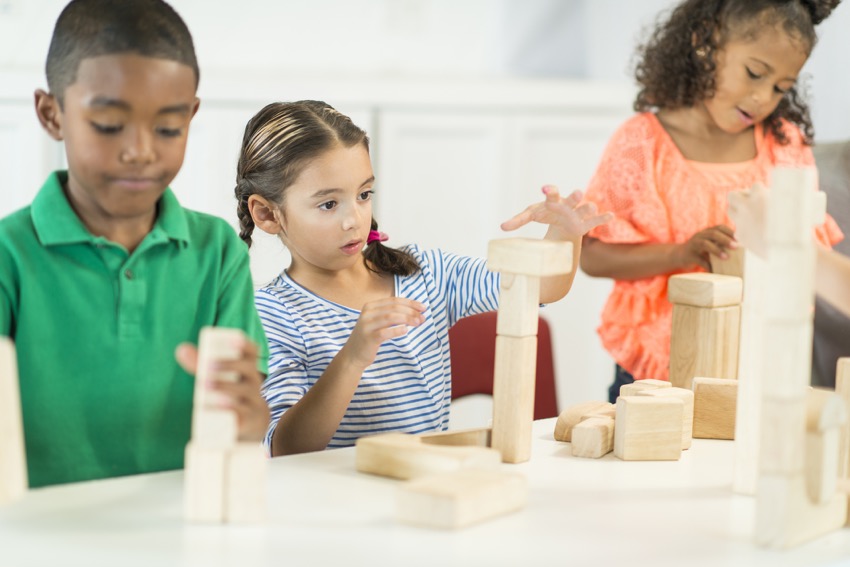Merry Mathematics: Using Holiday Cheer to Teach Ordinal Numbers


Every year on the day after Thanksgiving, you can find holiday music everywhere, playing nonstop. You will hear no complaints from me—I love holiday music! These songs remind me of the holidays and of my experience as a teacher striving to encourage a love of mathematics in my students.
As a teacher and recovering “arithmophobe” (a person with a fear of mathematics), my goal was to make math fun, exciting, and engaging for my students.
I worked hard to model positive and eager engagement with the math all around us and to show how mathematical concepts are embedded in almost everything we do. I did not want my fear of mathematics to influence how the children felt about math.
Now, because I use The Creative Curriculum Objectives for Development & Learning, I find myself filtering everyday experiences through the “lens” of the objectives and thinking about how I used these experiences in my classroom. So, when I hear the lyrics, “On the first day of Christmas, my true love gave to me, a partridge in a pear tree,” I automatically think about Objective 22c, “Represents and analyzes data.” I am also specifically reminded of two indicator levels for this objective: Level 2, “Knows a few ordinal numbers” and Level 4, “…Uses simple comparisons and ordinal terms to describe findings.”
As teachers, we often offer children multiple opportunities throughout the day to create and read simple graphs and make simple comparisons, but how often do we intentionally teach and use ordinal numbers?
Children may be very familiar with the ordinal words first and second, but they might need more opportunities to use the words “third” and beyond. Here are a few ideas to help reinforce ordinal numbers with children who are ready to begin practicing this skill:
- When lining up to go outdoors, divide children into groups of ten and assign each child an ordinal number from first to tenth.
- In a small group, provide ten blocks of various shapes and sizes and explain that the goal is to work together to make a tower as tall as possible using only these ten blocks. Each child will have a turn to put a block on the tower. For each turn, stress the ordinal number words. For example, you might say, “Jamal, will you add the fifth block to the tower?” or “Jamal did a great job adding the fifth block to our tower. Lisa, will you add the sixth block to the tower?”
- Use photos of the children in your class to make laminated cards. Arrange a few photo cards in a line. Beginning at one end, talk about who is first in line, second in line, etc. After some practice, rearrange the cards in the line and ask the children to tell you who is first, second, third, etc. As children become skilled with a few ordinal numbers, add more photo cards.
- Provide a small group of children with a collection of images from a familiar story (start with three or four images). Ask them to put the images in the sequential order of the story, emphasizing the words first, second, third, and fourth. Invite children to retell the story using the images as a guide. To increase the complexity, add additional images or have children make up a unique story using images of their choice.
- Place a collection of up to ten identical items (counters, manipulatives, etc.) in a line. Review the position of each item using ordinal numbers. Cover the items with a handkerchief or scarf. While the items are covered, replace one of the items with a different item. When you are done, uncover the items and ask the children which item is different. For example, you might show eight blue counter bears, and then replace one with a red bear. Next, you would ask, “Which bear is different?” Point to each item and offer hints such as “Is it the first bear? The second bear?” and so on until the child feels confident answering.
- Lead children in an adaptation of the preschool card Mighty Minutes 160, “Tell It Again.” Invite a small group of children to create a short story using picture cards or props. Give each child a picture or prop (e.g., a fox, a tree, a present, a child, etc.). Then, set the stage with a statement like, “Once upon a time, we went walking in the park. The first thing we saw was a [and point to a child holding a picture or prop]….” Encourage the child to tell the next part of the story. Then, point to the next child and say, “The second thing we saw was a….” Continue to add to the story.
If it is appropriate for your program, you can have children add felt lights to a flannel board menorah or kinara (for Hanukkah and Kwanzaa, respectively), emphasizing the first night, second night, etc. You can also highlight the ordinal numbers in the song, “The Twelve Days of Christmas.”
I always loved seeing the looks of bewilderment on my student’s faces as we sang about receiving geese, swans, drummers, or maids a-milking. One year, my children who were dual-language learners decided to create an alternative version of the song in which the gift giver gave more appropriate gifts (“Five teddy bears!”).
Remember to keep your eyes and ears open this holiday season. You never know what might inspire you to create learning experiences that support the objectives for development and learning.
Happy holidays! (And yes, that’s an example of Objective 15b, “Notices and discriminates alliteration.”)